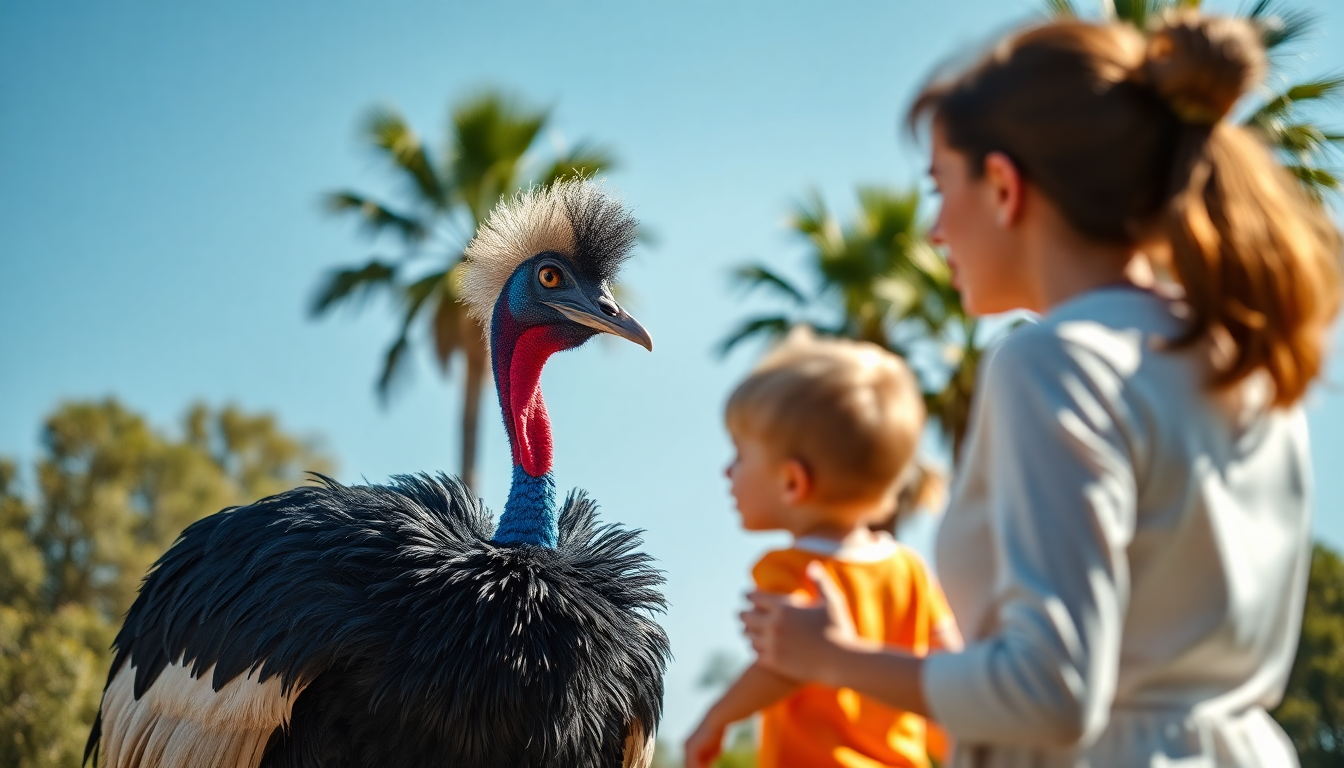Table of Contents
Imagine this: a sunny day in Australia takes a wild turn when a mother and her young son find themselves face-to-face with two imposing cassowaries. These flightless birds, with their vibrant colors and striking features, aren’t just a sight to behold; they remind us of the delicate balance we share with nature.
This unexpected encounter highlights a vital lesson for everyone—respecting wildlife is key to staying safe.
The Encounter
On May 9, security footage from South Mission Beach captured a moment that could easily have turned into a disaster. As the mother and son were heading home, the young boy spotted the two cassowaries following closely behind.
In a flash of instinct, he sprinted for safety. Luckily, his mother was right there, holding the door open just in time for him to slip inside before the birds could get too close. It’s a vivid reminder of how unpredictable wildlife can be.
Jeff Lewis, a Wildlife Ranger, shared some insights on the matter, stressing the importance of leaving wildlife alone. Cassowaries are known for their formidable kicks, which can cause serious injuries—a fact that anyone who studies these birds is painfully aware of.
While they tend to shy away from humans, their behavior can shift dramatically when they associate people with food, leading to potentially dangerous situations.
Understanding Cassowaries
Often referred to as living dinosaurs, cassowaries are essential players in their tropical ecosystems.
Despite their intimidating reputation, they usually avoid human interactions. But when these birds get used to people—especially if they’ve been fed—they can become aggressive in their quest for food. This shift not only endangers them but also poses risks for nearby residents.
Experts have identified the two cassowaries involved in this incident as a parent pair, which sheds light on their social dynamics. The father cassowary, in particular, is known for his protective instincts when it comes to his offspring, making encounters with humans even more complex. The Department of the Environment, Tourism, Science, and Innovation has urged locals to avoid feeding these birds to prevent them from associating humans with meals.
Safety Guidelines
This recent encounter is just one of many; there have been several incidents related to the illegal feeding of cassowaries, which can lead to aggressive behavior. In one troubling case, an elderly man suffered serious injuries after a cassowary approached him, seemingly on the hunt for food. These events highlight the pressing need for public education about the dangers of feeding wildlife.
In response, authorities have launched a public service campaign cleverly dubbed “Be-cass-o-wary.” This initiative aims to teach the public about appropriate behavior when encountering cassowaries. Key guidelines include not stopping to observe these birds on the road, keeping a safe distance, and never intervening between a parent and its chick, as this can trigger a defensive reaction from the adult bird.
Ultimately, coexisting with wildlife necessitates a mix of respect and caution. By following these guidelines, we can not only ensure our safety but also protect these remarkable creatures and their natural behaviors. So next time you’re out in nature, remember: it’s all about harmony with the wild!





